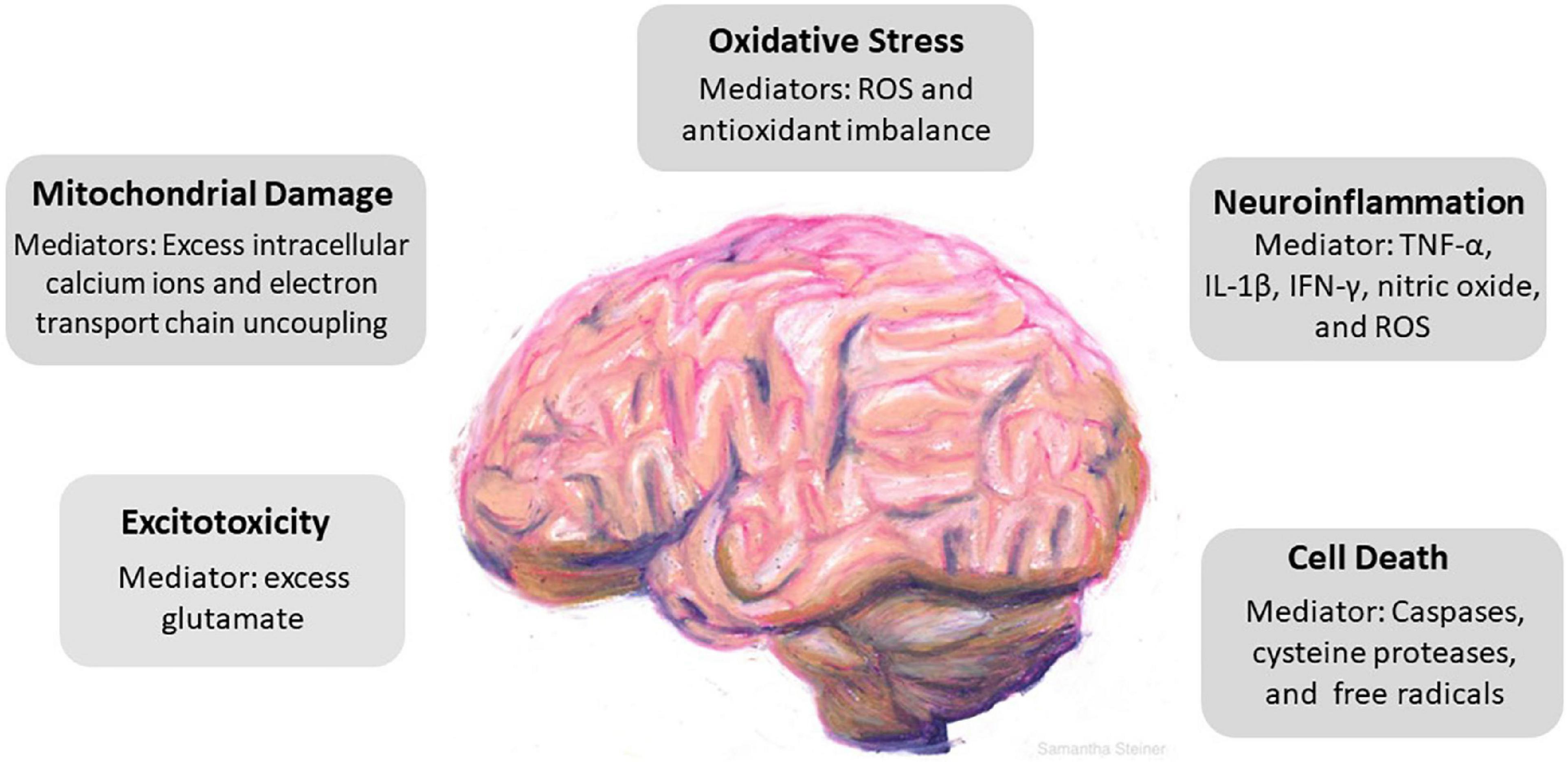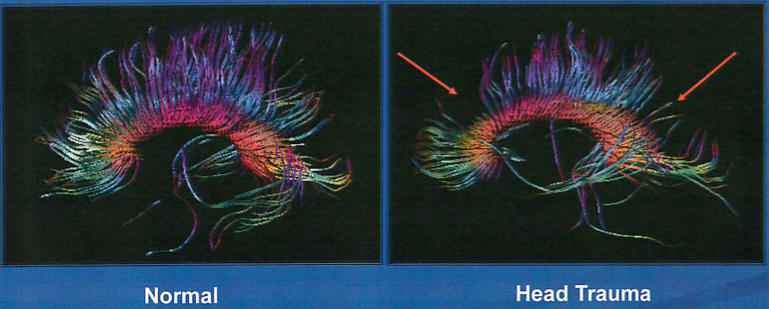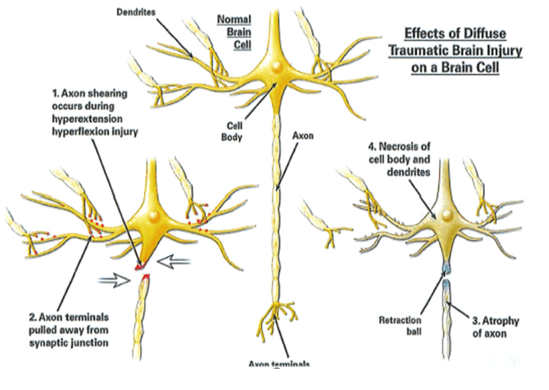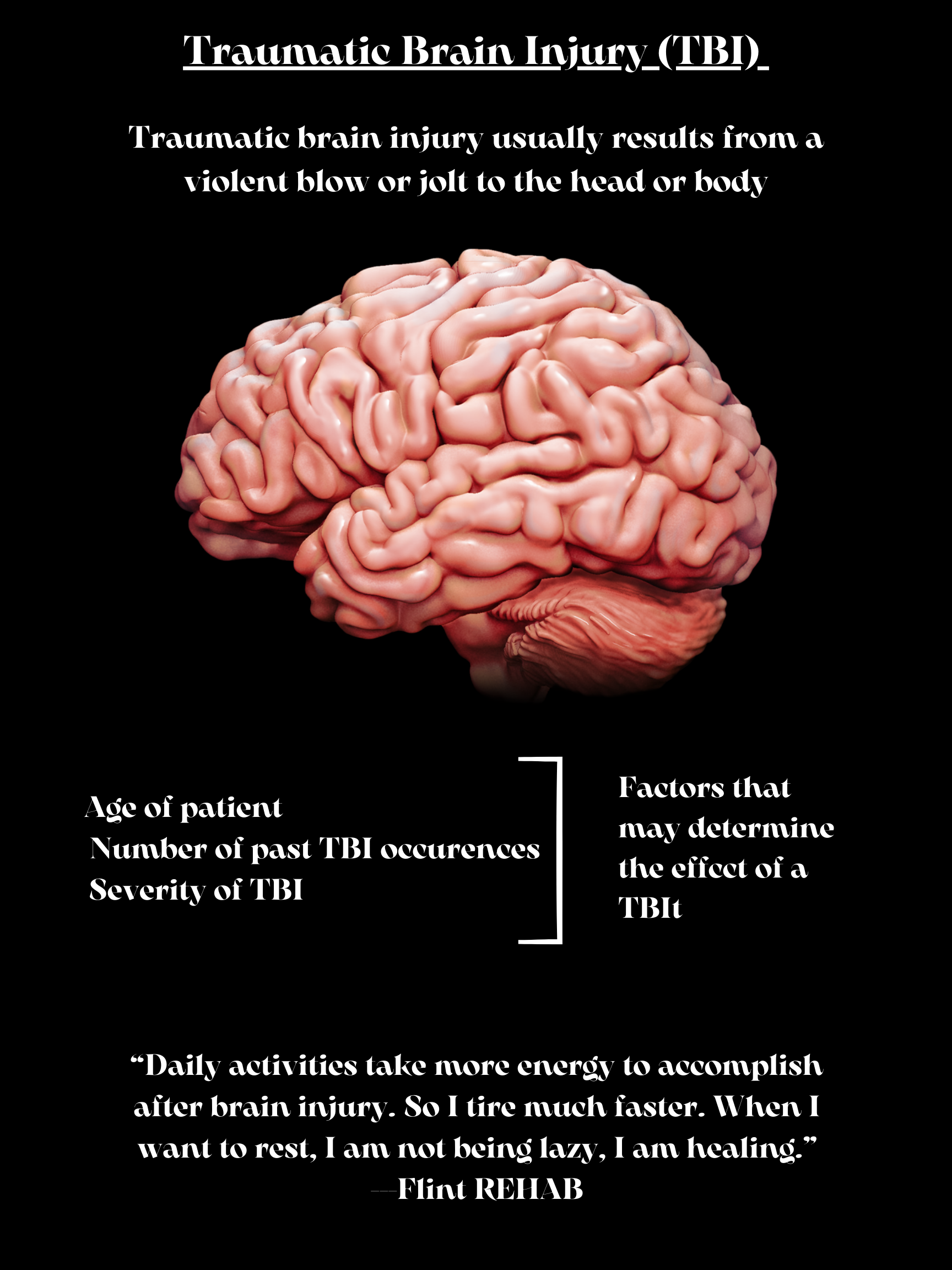Why do I personally enjoy this topic? Maybe because of my unknown personal connection to it? Traumatic brain injury (TBI) is usually caused by a mechanical impact on the head. This injury is usually followed by symptoms such as slow cognition, migraines, dizziness, and weakness. Young children may be at higher risks of having a TBI due to their involvement in sports. But most research have pointed out that after prevention, recovery time might hold a big key in restoring the health of a TBI patient. Therefore, due to the high risk TBI poses to younger people, recent research has looked into understanding the impact of TBI on a molecular level.

Figure 1. Picture showing events that follow occurence of a TBI in the brain. Symptoms usually emerge from these events.
Research has shown that on a molecular scale, mechanical impact on the brain can lead to events such as neuroinflammation and axonal dysfuntion. In simpler terms, inflammation is the body’s response to injuries whereby chemicals are released to the site of an injury. Neuroinflammation is when inflammation happens in the CNS: brain or spinal cord. More importantly, significant imaging techniques such as Diffusion Tensor Imaging (DTI) [2] and Fractional anisotropy (FA) [3].
While FA serves as a sclae to understand levels of damage to white matter and axons after a TBI, researchers and physicians are able to gain some understanding on treatment and precautions for different TBI cases. Other factors that affect symptoms after a TBI occurence include timing after the injury, age of the subjects, severity of injury, age of subjects, and region of the brain affected. These symptoms may also affect DTI results. [4] Below are what DTI imaging may look like and what information they present.

Figure 2. Picture showing DTI scan results comparing a healthy brain to a brain after a head trauma.

Figure 3. Picture showing effects of mechanical impact on a brain cell following a TBI.
Another major symptom of TBI is neurocognitive impairment. More interestingly, many cognitive impairments resulting from TBI do not get diagnosed until brain scans of the patients brain after they have died. My closest experience to TBI was my involvement in an auto accident as a young child. My head was impacted, but I was told I was fine although no brain scans were done on my brain.
After learning about this topic at such level, I definitely think I should get a long awaited brain scan, just to be safe!

Figure 4. Artstract made by student showing some basic information and awareness on brain injury.
References:
Rauchman, S. H., Zubair, A., Jacob, B., Rauchman, D., Pinkhasov, A., Placantonakis, D. G., & Reiss, A. B. (2023, February 6). Traumatic brain injury: Mechanisms, manifestations, and visual sequelae. Frontiers. https://www.frontiersin.org/journals/neuroscience/articles/10.3389/fnins.2023.1090672/full — first picture shwing symptoms of tbi
Weber , B., Fliessbach, K., & Elger , C. E. (n.d.). Diffusion tensor imaging. Diffusion Tensor Imaging – an overview | ScienceDirect Topics. https://www.sciencedirect.com/topics/medicine-and-dentistry/diffusion-tensor-imaging#:~:text=Diffusion%20tensor%20imaging%20(DTI)%20is,structural%20connections%20and%20interregional%20information
Paus , T. (n.d.). Fractional anisotropy. Fractional Anisotropy – an overview | ScienceDirect Topics. https://www.sciencedirect.com/topics/immunology-and-microbiology/fractional-anisotropy#:~:text=Fractional%20anisotropy%20(FA)%20indicates%20the,marker%20of%20axonal%20structural%20integrity.
Giza, C. C., & Hovda, D. A. (2014, October). The new neurometabolic cascade of concussion. Neurosurgery. https://www.ncbi.nlm.nih.gov/pmc/articles/PMC4479139/
Gordon, J. (2013, October 3). DTI – diffusion tensor imaging MRI for abnormal axonal tracts. Brain Injury Help. https://braininjuryhelp.com/dti-diffusion-tensor-imaging-mri/
How can diffusion tensor imaging MRI help in brain injury?. Brain Injury Law of Seattle. (2023, April 29). https://www.braininjurylawofseattle.com/how-can-diffusion-tensor-imaging-mri-help-objectively-document-a-brain-injury/
